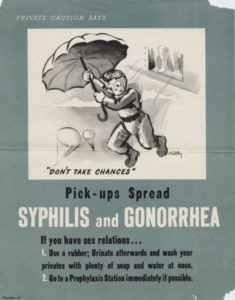
When properly used, latex condoms are intended to prevent pregnancy, HIV/AIDS and other sexually transmitted infections.
Use a new condom for each act of sex.

Tear open the package carefully. Do not use fingernails, teeth, scissors, or anything that can damage the condom.

Before any sexual contact, place the condom on the head of the erect penis with the rolled side out.

Leave an empty space at the end of the condom to collect semen. Remove any remaining air by gently squeezing the tip of the condom to avoid breakage.
Lesions, pre-ejaculate secretions, semen, vaginal secretion, saliva and blood can all transmit infectious organisms.

Unroll or pull the condom all the way to the base of the erect penis. If the condom doesn’t unroll easily, it may be on backwards, damaged or too old. Throw it away and start over with a new condom.

Immediately after ejaculation, hold the rim of the condom in place and withdraw the penis while it is still erect. Avoid spilling semen.
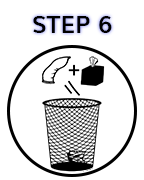
Dispose of a used condom by wrapping it in a tissue and throwing it into the trash. Wash your hands, genitals and surrounding areas with soap and water.

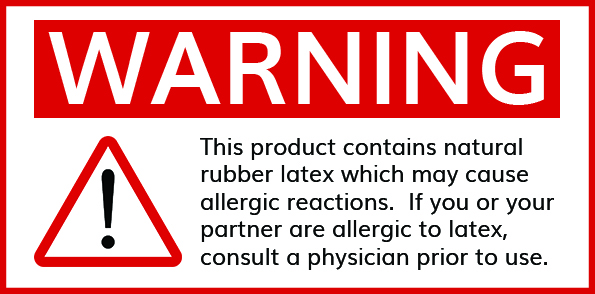
- Do not reuse condoms.
- Store latex condoms in a cool, dry place (below 100°F) and avoid exposure to direct sunlight.
- If the latex material is sticky, brittle or obviously damaged, do not use the condom.
- If the color is uneven or changed, do not use the condom.
- Make sure there is adequate lubrication. If you add lubricant, use a water based lubricant. DO NOT USE OIL-BASED LUBRICANTS, such as those made with petroleum (e.g. Vaseline®), mineral oil, vegetable oil or cold cream, as these will damage the condom.
- Some topical medicines may affect the efficacy of latex condoms on contact. Please consult a physician or pharmacist for advice prior to use.
- Make sure you pay attention to the expiration date printed on the condom wrapper. Do not use an expired condom.
- If you have any questions about birth control options, particularly because of health reasons or for avoiding pregnancy, please consult a health care provider.
Centers for Disease Control and Prevention estimates that there more are 110 million STI’s among men and women in the U.S, with 20 million new STI cases every year.[1]
Half of the 20 million new STD’s reported each year were among young people, between the ages of 15 to 24.[1]

One in two sexually active persons will contract an STD/STI by age 25.[2]
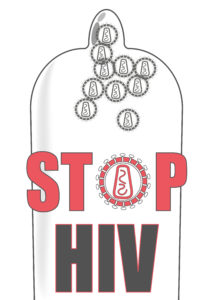
When it comes to HIV, using a condom makes sex 10,000 times safer than not using a condom.[3]

Laboratory studies have shown that latex condoms provide an effective barrier against even the smallest STD pathogens.[4]

People who use condoms feel their experiences are just as pleasurable as people who don’t. Protect yourself & still have just as much fun.[5]
 Did you know you can also contract STI’s from not only vaginal sex, but also oral sex, anal sex and even sharing sex toys? There are multiple ways to protect yourself from STI/STD’s with a condom.[6]
Did you know you can also contract STI’s from not only vaginal sex, but also oral sex, anal sex and even sharing sex toys? There are multiple ways to protect yourself from STI/STD’s with a condom.[6]
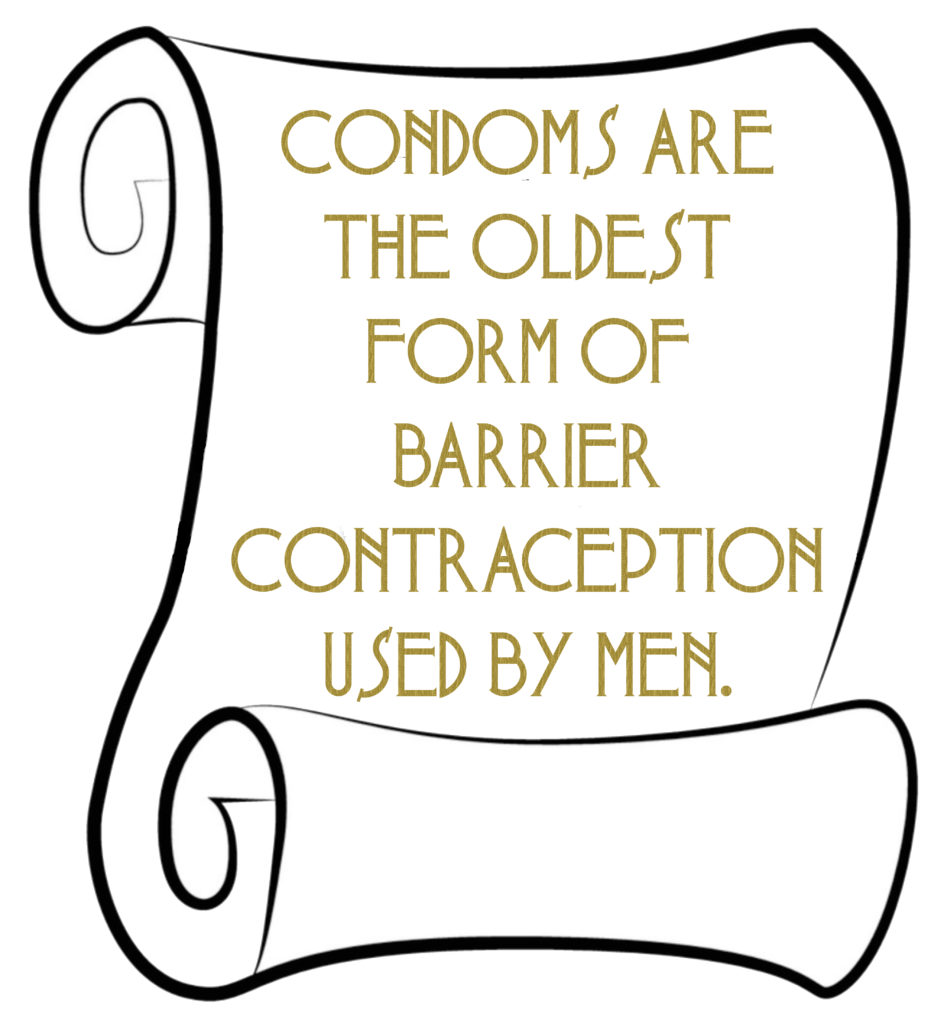
The oldest evidence of condoms go all the way back to the B.C. years. There were paintings found in caves in Egypt and in Europe depicting condom use, however at the time, condoms were believed to only protect against sexually transmitted infections & diseases. It was later realized that condoms also can prevent pregnancy.[7]

17th Century Fish Bladder Sheath – Photo Source: The Humble Little Condom
Throughout the years, condoms have been made out of all different kinds of materials such as linen, animal intestines, oiled silk paper, leather, thin hollow animal horn or tortoise shell. In the 1800’s, rubber condoms were introduced, and they were washable and reusable until they deteriorated. (This is not the case anymore; use a new condom for each new sexual act!)[8]

![]()
When used consistently and properly, latex condoms are 98% effective in preventing unintended pregnancy.
![]()
Latex condoms are the ONLY contraceptive method that protect against both pregnancy and sexually transmitted infections.

With consistent and proper use, condoms greatly reduce the chance of contracting a STI/STD by vaginal intercourse, oral intercourse and anal intercourse.
![]()
Condoms are pleasurable! Cumbrella ultra-thin condoms are 30% thinner than a standard condom; you don’t even know it’s there.
![]()
Other than abstinence, condoms are the most inexpensive form of birth control. It is also much cheaper to buy condoms than to pay for doctor visits and medications to cure or control STI/STD’s.
![]()
Condoms are easy to obtain, with no doctors visit or prescription needed. You can order Cumbrella’s here in less than 3 minutes.
![]()
Condoms are small and easy to discreetly take with you anywhere.
![]()
Side effects are unlikely unless you are allergic to latex. However, according to the American Latex Allergy Association, less than 1% of the general population in the U.S. is allergic to latex.

Condoms reduce stress! Use a condom correctly every time you engage in sexual intercourse and you are greatly eliminating any chance of catching a STI/STD and any risk of an unintended pregnancy.
Sources
[1] Centers for Disease Control and Prevention. CDC Fact Sheet: Incidence, Prevalence, and Cost of Sexually Transmitted Infections in the United States. https://www.cdc.gov/std/stats/sti-estimates-fact-sheet-feb-2013.pdf
[2] Cates JR, Herndon NL, Schulz S L, Darroch JE. (2004). Our voices, our lives, our futures: Youth and sexually transmitted diseases. Chapel Hill, NC: University of North Carolina at Chapel Hill School of Journalism and Mass Communication.
[3] Carey, Ronald F., et al. (1992). “Effectiveness of Latex Condoms as a Barrier to Human Immunodeficiency Virus-Sized Particles under Conditions of Simulated Use.” Sexually Transmitted Diseases, 19(4), 230–234.
[4] Centers for Disease Control and Prevention. CDC Fact Sheet in Brief. http://www.cdc.gov/condomeffectiveness/docs/condomfactsheetinbrief.pdf
[5] Sanders, Stephanie A., et al. (2010). “Condom Use During Most Recent Vaginal Intercourse Event Among a Probability Sample of Adults in the United States.” The Journal of Sexual Medicine, 7 (Supplement 5).
[6] The Well Project. Sexually Transmitted Infections or Diseases (STIs or STDs). http://www.thewellproject.org/hiv-information/sexually-transmitted-infections-or-diseases-stis-or-stds
[7] The Humble Little Condom: A History. Anne Collier. Page 11.
[8] The Humble Little Condom: A History. Anne Collier. Page 68.
